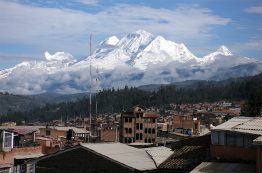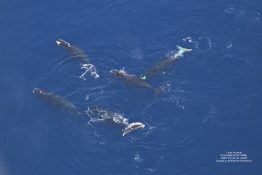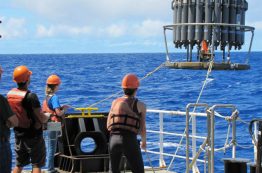As cities become more densely populated, urban planning has traditionally focused more on improving transit infrastructure to move as many vehicles as possible, helping citizens get from home to work, the grocery store, local coffee shop, health center or nearest park. With so much time spent driving in vehicles, cities are facing growing air and noise pollution, while humans are facing social isolation and numerous health impacts from sitting in a car.
Read more »Global warming found to be culprit for flood risk in Peruvian Andes, other glacial lakes
As the planet warms, glaciers are retreating and causing changes in the world’s mountain water systems. For the first time, scientists at the University of Oxford and the University of Washington have directly linked human-induced climate change to the risk of flooding from a glacial lake known as one of the world’s greatest flood risks. The study examined the case of Lake Palcacocha in the Peruvian Andes, which could cause flooding with devastating consequences for 120,000 residents in the city of Huaraz.
Read more at UW News »A whale murder mystery in the Arctic
From a small aircraft flying over the Pacific Arctic, scientists with the Aerial Surveys of Arctic Marine Mammals (ASAMM) project surveyed the movements and interactions of marine mammals for more than four decades. Observations and images from these surveys offer clues informing our understanding of the lives, and deaths, of marine mammals in this remote region. A new study, published in Polar Biology and led by researchers at the University of Washington’s Cooperative Institute for Climate, Ocean, and Ecosystem Studies (CICOES), is particularly interested in the ‘death’ part of those survey observations, and has uncovered the first direct evidence of killer whales as the primary cause of death for one of the Arctic’s endangered species, bowhead whales of the Bering-Chukchi-Beaufort seas stock.
Read more »We’re coping with COVID by going outdoors, but how is nature coping with us?
If you’ve hit the trails or the water this year, you know COVID-19 has transformed the way many people are recreating in our wild spaces. Places that were previously “off the beaten track” are as popular as they’ve ever been, and the usual hotspots are overwhelmed with hikers, campers and skiers. What does this mean for our wild spaces, and how can we be better stewards?
Read more »Marine organisms use previously undiscovered receptors to detect, respond to light
Just as plants and animals on land are keenly attuned to the hours of sunlight in the day, life in the oceans follows the rhythms of the day, the seasons and even the moon. A University of Washington study finds the biological light switches that make this possible. Single-celled organisms in the open ocean use a diverse array of genetic tools to detect light, even in tiny amounts, and respond, according to a study published the week of Feb.
Read more at UW News »





